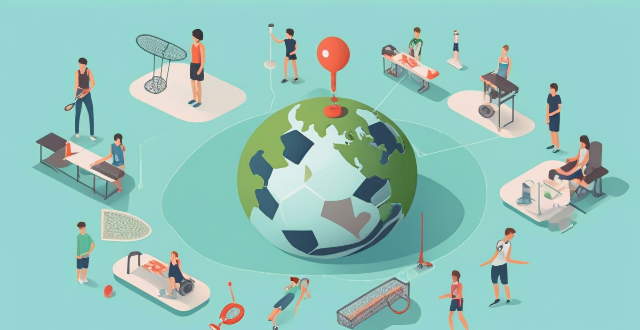The globalization of sports has led to increased competition in player recruitment, diversification of talent pools, and the adoption of advanced training methods. This includes exposure to international markets, cultural exchange, geographic broadening, demographic variety, technological integration, scientific approaches, language and communication adaptation, and education and life skills development.

Globalization of Sports: Impact on Player Recruitment and Talent Development
The globalization of sports has had a profound impact on the way players are recruited and developed. This phenomenon has led to increased competition, diversification of talent pools, and the adoption of advanced training methods across different countries and continents. Here's a detailed exploration of these aspects:
Increased Competition
International Markets
- Exposure: Players from all over the world are now exposed to international competitions and leagues, raising the bar for performance.
- Talent Sourcing: Clubs and organizations scout globally for the best talent, making recruitment more competitive.
Cultural Exchange
- Diverse Strategies: Coaches and trainers adopt strategies from successful foreign teams, leading to a cross-pollination of ideas and techniques.
- Adaptability: Players must adapt to different styles of play and cultural norms, which can enhance their versatility and market value.
Diversification of Talent Pools
Geographic Broadening
- Wide Net Casting: Scouts cast a wider net geographically, looking beyond traditional hotbeds for emerging talent.
- Equity in Opportunities: More regions have equal opportunities to develop and showcase their talent, reducing historical biases in recruitment.
Demographic Variety
- Inclusivity: Athletes from diverse backgrounds and ethnicities are given chances to prove themselves at the highest levels.
- Role Models: Success stories from various demographics inspire local communities, leading to increased participation rates.
Advanced Training Methods
Technological Integration
- Data Analytics: The use of analytics helps in identifying potential and refining skill sets with precision.
- Virtual Reality: VR technology simulates game scenarios for improved decision-making and skill development.
Scientific Approaches
- Sports Science: Understanding biomechanics, nutrition, and recovery has become integral to player development programs.
- Mental Health: Mental conditioning is recognized as crucial for peak performance and longevity in a player’s career.
Cultural Adaptation and Sensitivity
Language and Communication
- Multilingualism: Players often learn multiple languages to communicate with teammates and coaching staff effectively.
- Cultural Assimilation: Adapting to new cultures can accelerate personal growth and improve team dynamics.
Education and Life Skills
- Academic Programs: Many sports organizations offer educational programs alongside training to ensure athletes have well-rounded development.
- Career Planning: There’s an increasing focus on preparing athletes for life after sports through mentorship and career guidance initiatives.
In conclusion, the globalization of sports has ushered in a new era where player recruitment is no longer confined by geographical boundaries, and talent development is enhanced by cutting-edge methodologies and cultural exchanges. This dynamic environment presents both challenges and opportunities for athletes, coaches, clubs, and sports organizations alike.